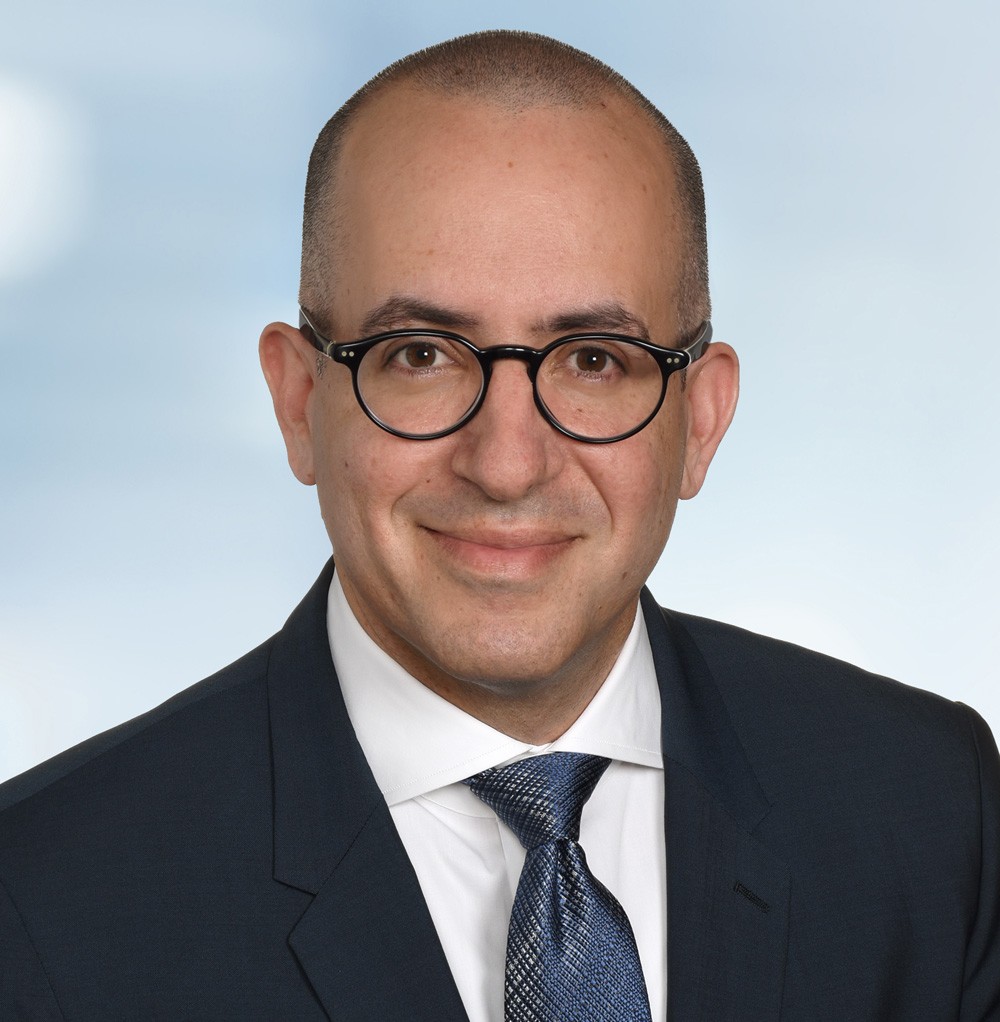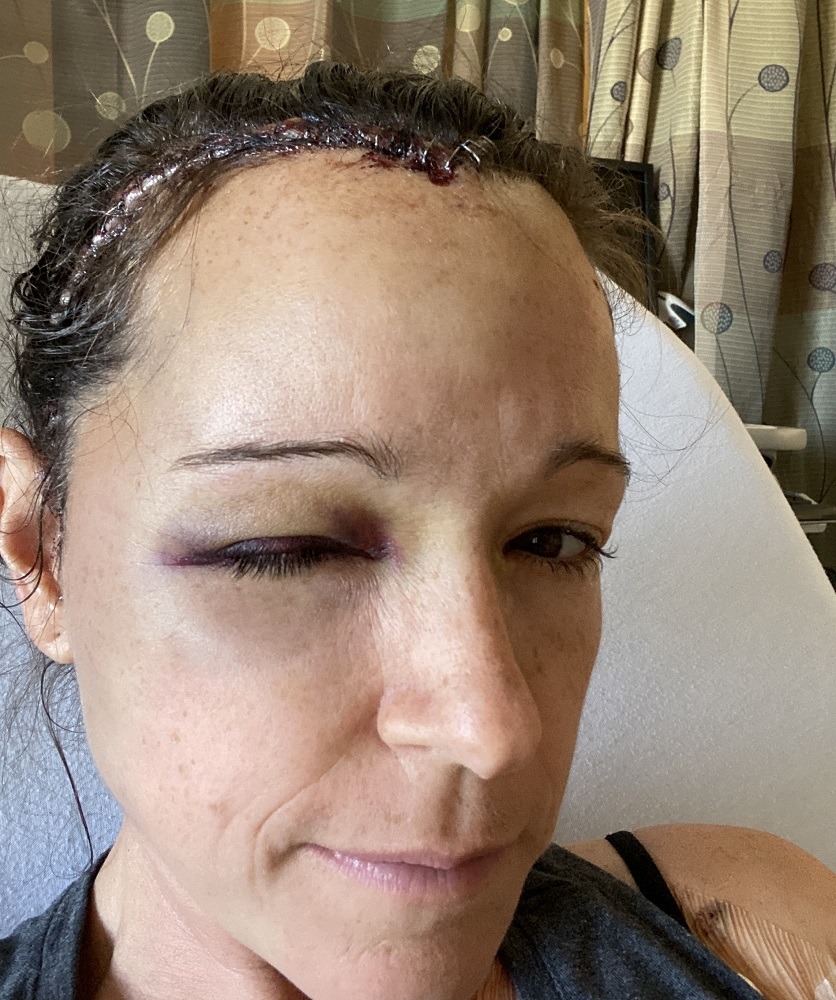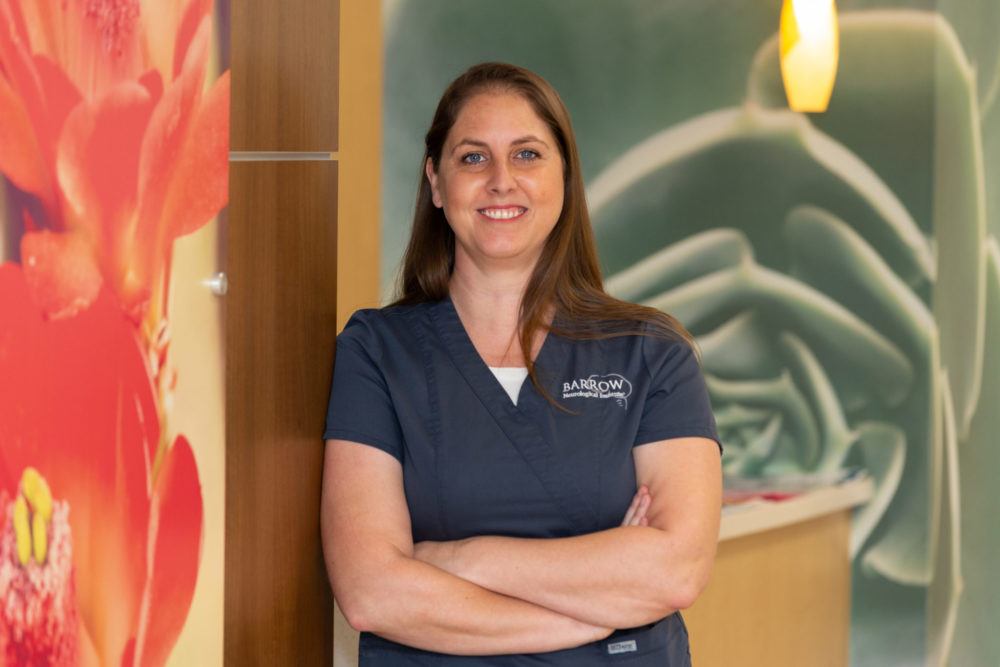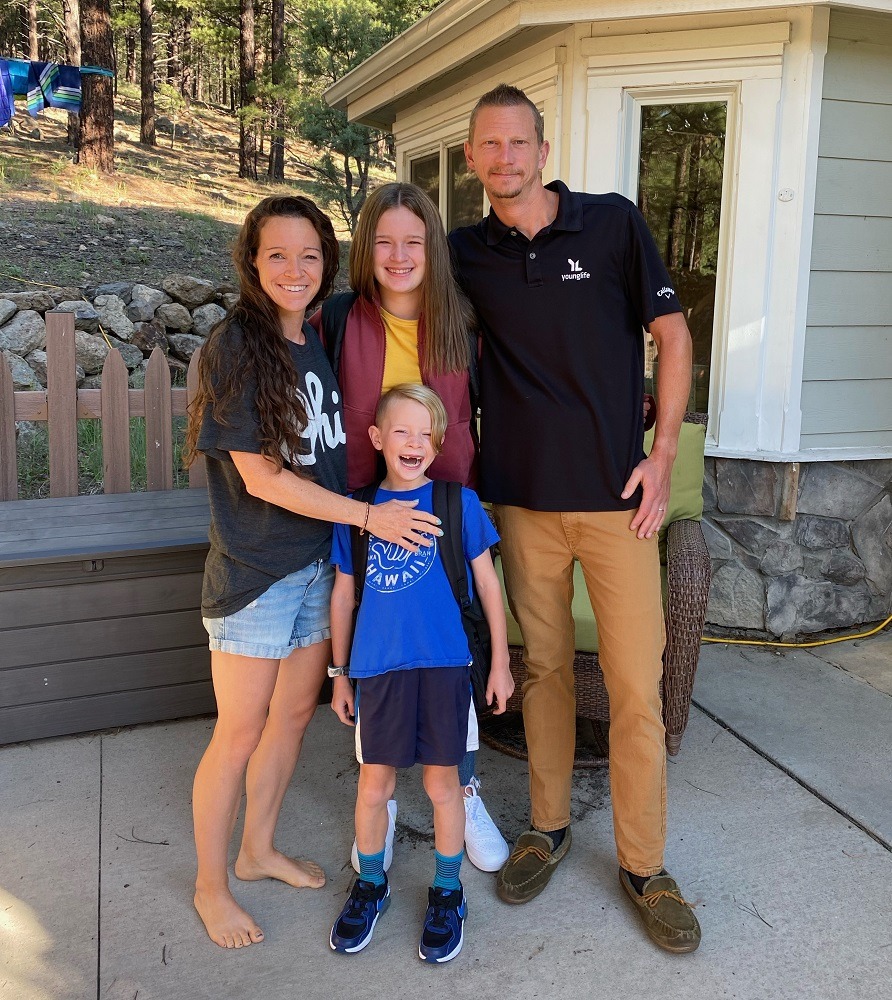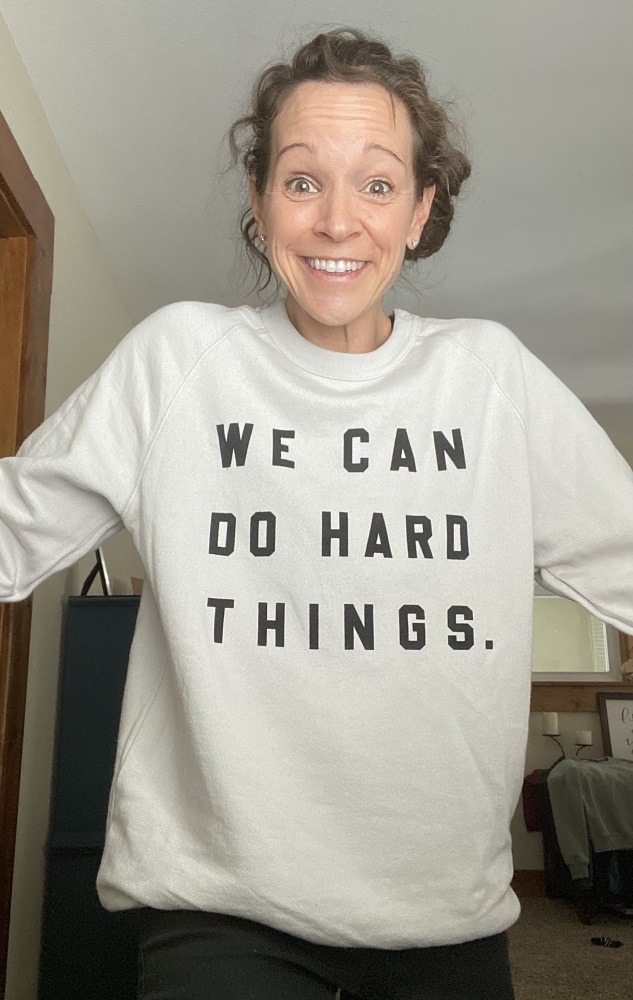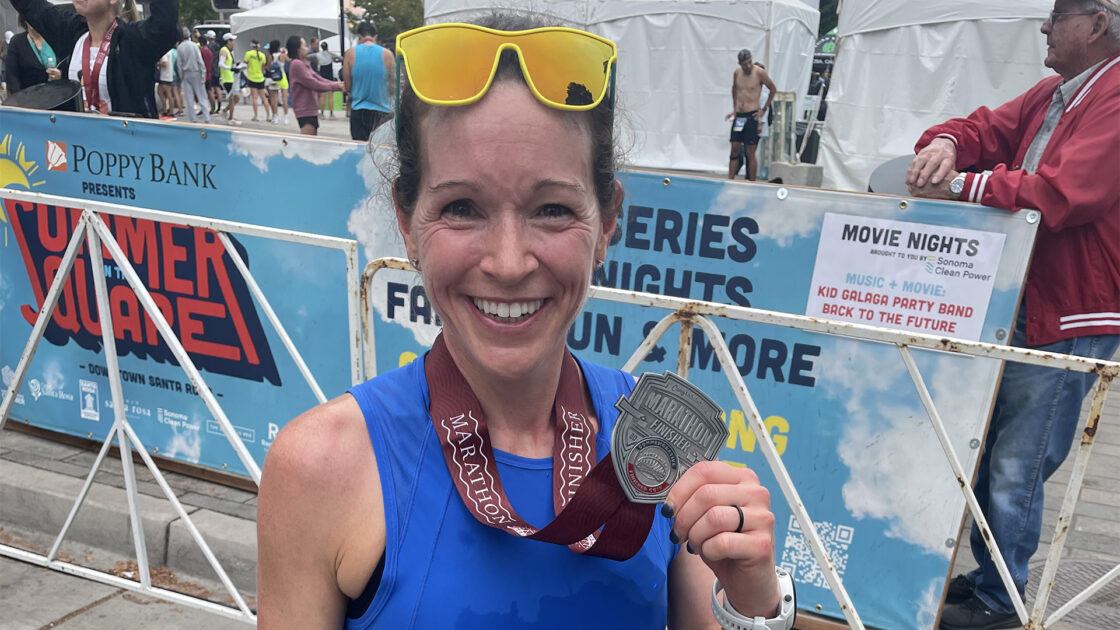
Barrow Patient to Run Boston Marathon After Meningioma Surgery
Christi Endicott was out for a run when she learned she had a brain tumor. She didn’t know it yet, but it would mark the beginning of a marathon journey—in more ways than one.
This past August, Christi achieved a highly coveted Boston Marathon qualifying time, or a “BQ,” at the Santa Rosa Marathon. Not only was it her first attempt at the 26.2-mile distance, but it was less than three years after undergoing an 11-hour brain tumor surgery at Barrow Neurological Institute.
Christi’s concerns began in 2018 with a sudden, extreme pain in her right temple. She rarely experienced headaches, and this one felt relentless. It persisted for a full week and worsened every time she stood up.
“Then I had 13 what we could call ‘episodes’ in three days,” she said. “I was jumping on the trampoline with my son, and all of a sudden I had this rush of heat come up. Then I had déjà vu and everything flooded out, and I felt like I was going to throw up.”
These episodes didn’t only occur during physical activity. They also struck while Christi was driving, reading a book, and meeting with colleagues at work.
She visited a clinic in her northern Arizona town of Williams and then a hospital. Her providers at both suspected a heart problem.
That led Christi to the office of a cardiologist, who performed an echocardiogram. Then he ordered magnetic resonance imaging (MRI) of her brain. “This feels neurological,” he told her.
The Starting Line: Brain Tumor Diagnosis
Christi received her MRI report and, after Googling the medical jargon, called the office for clarification. A nurse returned the call while Christi was out running. “You have a brain tumor,” the nurse confirmed.
“I’m sorry, I have a huh?” Christi responded.
Christi immediately called her twin sister. They both thought of the medical drama series they watch on TV, remembering the harrowing experiences of characters with brain tumors.
“I think, right away, I thought it was over,” Christi recalled.
Soon after, Christi called Barrow Neurological Institute in Phoenix. She scheduled an appointment with Nader Sanai, MD, an internationally renowned neurosurgeon who specializes in brain tumors and directs the Ivy Brain Tumor Center.
Christi was diagnosed with a meningioma—a type of tumor that arises from the protective layers of tissue surrounding the brain, known as the meninges.
Like most meningiomas, Christi’s tumor wasn’t cancerous; it wasn’t spreading to other parts of her body. But that didn’t mean it was harmless.
Some benign meningiomas may be found incidentally, when imaging is performed for an unrelated reason, and remain small and asymptomatic throughout a person’s life. Such tumors may only require observation. However, in other cases, noncancerous meningiomas can cause disabling or life-threatening complications by compressing the brain as they grow.
Christi’s initial MRI showed a grape-sized mass nestled behind her right eye and at the base of her skull, formally known as a sphenoid wing meningioma. The tumor was pressing against her optic nerve, which carries visual information from the eye to the brain.
“(Dr. Sanai and I) came to the agreement that we would watch it because I wasn’t ready,” Christi said. “I had a headache, I had some episodes, and all of a sudden I’m having brain surgery? That felt like too much.”
Christi underwent periodic MRI scans over the next year. Although it happened slowly, her tumor grew with each scan.
Then Dr. Sanai told her what she’d needed to hear: There’s no good time to have brain surgery.
“That really helped me,” Christi said. “There’s never a time where I’m going to say, ‘I feel good about where my kids are at. I don’t need to see this or that.’ Because in the back of your mind, there’s always that what if?”
At her appointment in September 2019, she decided to take the leap and schedule her surgery for a month later.
During her year of watchful waiting, Christi had consulted with three other neurosurgeons at different institutions. They all agreed the tumor needed to come out.
She ultimately chose Dr. Sanai for her surgery because she felt most confident in his experience level. Dr. Sanai is one of the nation’s highest-volume neurosurgical oncologists and routinely treats meningiomas of the skull base, like Christi’s.
The Wall: Recovering from Meningioma Surgery
To reach the tumor, Dr. Sanai performed a modified orbitozygomatic craniotomy. This approach involves making an incision behind the hairline and removing the bone that forms the eye socket and cheek.
“Christi had a critical problem with a large benign tumor compressing her optic nerve,” Dr. Sanai said. “We were grateful to identify it as quickly as we did, and she tolerated a complex procedure beautifully.”
When Christi woke up from the surgery, she had double vision and temporary numbness on the left side of her body. The next day, though, she was walking around the hospital unit.
Being surrounded by nurses with experience in the care of neurosurgical patients brought Christi comfort. Her post-surgery symptoms were common and should improve, they explained.
Since her discharge from the hospital, Christi has had the ongoing support of Jacki Garcia. The neurosurgical oncology nurse navigator guides patients throughout their brain tumor journey, fielding their questions and coordinating their appointments.
“There is a saying in the brain tumor community: There is no such thing as a benign tumor,” Jacki said. “That just means that even if you don’t need further treatment, this journey is not always an easy one.”
Christi returned home within a few days of the procedure, but she couldn’t dive right back into her busy lifestyle. On top of her athletic pursuits, she coaches soccer and basketball teams, owns and operates a granola business, oversees the intern program at a Christian camp, and parents two children with her husband. Much like when a runner hits “the wall” in the marathon, Christi realized she couldn’t do life at her usual pace and would have to slow down.
“People say it takes six months before you feel normal, and they’re not lying,” Christi said of the recovery process. “It’s kind of like how I feel like I can do a cartwheel, but I shouldn’t do a cartwheel because I’m 40. But in my brain I think, that’s so easy. I came home thinking I was still pre-surgery Christi, so it was very hard.”
A triathlete prior to surgery, Christi found herself with a drastically different exercise routine during her recovery: a daily walk on a loop near her house measuring about three-quarters of a mile. She took a nap every day at 1 p.m. and stuck to an 8 p.m. bedtime most nights, explaining that the exhaustion after surgery lingered for months.
“If I saw my friends at 1 p.m., they were like, ‘Why are you here?’” she recalled. “I really had to treat myself gently and how I would treat a friend.”
Christi also realized the importance of advocating for herself when she needed help, as much of her healing process was invisible to others.
“When you break your leg, everyone can see the cast and maybe extends that extra care and grace,” she said. “With the brain, it’s hidden.”
The Second Wind: Finding Purpose
Christi remembers when she received the green light to work out, beyond walking her daily loop.
“I was riding my bike in the garage, and my heart rate started to go up,” she said. “I thought: I’m never going to take this for granted. I’m never going to take for granted how strong our bodies can be, that we’re made for so much more.”
Christi’s symptoms had forced her to pause many of the activities she enjoyed, and her diagnosis left her wondering if she’d ever resume them. She feared she’d experienced many of her “lasts” without truly appreciating them.
“I had an analogy I called ‘the final pistachio effect,’” she explained. “You’re eating pistachios, and they’re in the same bowl as the shells. You break one open, drop the shell, eat the pistachio. Eventually, you’re looking for the last pistachio and you can’t find it; you ate it. But had you picked it up and said, ‘This is my last pistachio’ and you ate it, it would have been different.”
While on her bicycle, Christi had a tearful revelation: She wanted to be active every day going forward. She also thought to herself, “I don’t want to miss anything.”
Because the surgery had changed the shape of her eye socket, Christi found that standard swimming goggles no longer fit. Triathlons weren’t an option until she could have customized goggles made, but running didn’t have to wait.
“When I started running, I felt so alive,” Christi remembered. “You can hear your breath, you can feel your heartbeat, and you know your body is working properly. I fell in love with running, and then I wasn’t bad at it.”
The Finish Line: Achieving a ‘BQ’
Christi’s inspiration to run the 2023 Boston Marathon came from seeing her husband, Benson, finish the race in 2022. She wanted to celebrate her ability to run by chasing a big goal.
She knew the Boston Marathon carried prestige, but she didn’t realize initially that she’d be vying for one of the most sought-after entries in road racing. It’s common for runners to spend years pursuing a BQ, and even those who meet the time requirements for their age and gender may not gain entry if too many others do the same. In those cases, the cutoff times drop even further.
As a 40-year-old woman, Christi needed to finish in 3 hours and 40 minutes—an average pace of 8 minutes and 24 seconds per mile—to even have a shot at a Boston entry.
She reached out to a running coach and professional runner in her circle of friends, Rachel Tomajczyk, and targeted the Santa Rosa Marathon in California’s wine country. Although she became aware of the magnitude of her goal, her training runs gave her the confidence that she could achieve it.
On the morning of her race, Christi felt so overcome with gratitude that she cried during her warmup. She was grateful to be strong, alive, and able to do what was ahead. She thought of all the people who played a role in her journey and was in awe of the nearness of God. “Let’s do this,” she told herself.
Then, at the starting line, a realization sank in: This was no secret running goal. She’d told everyone about her BQ plans, and they’d be watching her progress on the athlete tracker. She thought she might vomit. But she also knew that her family and friends were excited for her to have the experience, regardless of the outcome.
Sporting bright yellow sunglasses and a race bib with the No. 518, Christi lined up next to Benson. She followed her coach’s advice: Stay on pace, trust the training, and have fun. Her husband stayed by her side through every mile, later declaring it his favorite race ever.
Christi sailed across the finish line in 3:28:54, averaging a pace of 7 minutes and 59 seconds per mile and qualifying for Boston with a cushion of about 11 minutes. She’d run a negative split, meaning the second half of her race was faster than the first.
“It was completely overwhelming,” she said. “I still can’t believe it. Who runs that fast for 26 miles? Not me!”
The Post-Race Afterglow: Celebrating the Journey
Christi still struggles with double vision at times, and she’ll always live with the possibility of a tumor recurrence. She’s experienced “scanxiety”—a term for the anxious feelings that arise before an imaging scan—but fortunately her scans have remained stable and become less frequent. A headache can also trigger worries that her tumor might be back.
In those moments, Christi tries to acknowledge her feelings without letting them consume her.
“If I’m too stuck in the ‘what if,’ then I’m going to miss it all,” she said.
Whether it’s admiring Arizona’s golden hour, striking up a conversation with a stranger in the grocery store, or savoring her homemade pizzas on Friday nights, Christi reminds herself to stay present for it all.
Boston feels celebratory. Running became a celebration of life.
Christi Endicott, Barrow Patient
“I’m so proud of how far Christi has come and the goals she has set for herself,” Jacki said. “She is truly an inspiration.”
Dr. Sanai echoed those sentiments. “As a neurosurgeon, it is my mission to provide patients with the best possible quality of life after surgery, so seeing Christi return to the active lifestyle she loved pre-diagnosis and realizing new dreams is incredibly fulfilling,” he said.
Christi doesn’t have a time goal for the April race. An emergency surgery for a rare form of intestinal obstruction, and a painful recovery process, sidelined her in December.
But she says running Boston isn’t about the time on the clock anyway. It’s about everything she’s gone through to get there—a victory lap to commemorate a journey she calls “Brain Tumor to Boston.”
“Boston feels celebratory,” Christi said. “Running became a celebration of life.”

